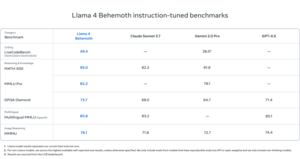DeepSeek Expands on ‘Open Weights’ AI with Upcoming Source Code Release

Overview of Open Source AI Models
The landscape of artificial intelligence (AI) is rapidly advancing, with several key models available under open source licenses. Notable examples include Google’s Gemma, Meta’s Llama, and earlier versions from OpenAI, such as GPT-2. These models often come with both open weights and supplementary code designed to guide their deployment when they respond to user queries.
The Importance of Training Code
While the release of weights is significant, the inclusion of training code is crucial for thorough transparency in AI. Currently, there is uncertainty surrounding DeepSeek’s upcoming open source release; it has not yet been confirmed whether this will include the code used for training the model. The Open Source Initiative (OSI) emphasizes that for an AI to be truly open source, it must contain detailed information about the training data. This enables skilled developers to replicate the AI system effectively.
Key Aspects of Open Source AI
Transparency: A complete open-source release allows researchers to gain insight into how a model operates. Understanding the underlying architecture can help identify biases and limitations that may not be apparent from just examining parameter weights.
- Reproducibility: When training code is made available, it becomes easier for researchers or developers to recreate the model from scratch. This is particularly vital when aiming to use different training data to achieve potentially better performance.
Recent Developments in Open Source AI
In the world of AI, timely updates are common. For example, in March, Elon Musk’s xAI made the inference-time code for Grok 1 available to the public as open source. The company has also announced plans to release an open source variant of Grok 2 shortly. However, the newest version, Grok 3, will remain proprietary and accessible only to X Premium subscribers for the time being.
HuggingFace’s Recent Actions
Notably, HuggingFace recently launched an open source clone of OpenAI’s proprietary "Deep Research" feature just hours after its initial release. This clone operates on a closed-weights model initially, as it was functional out of the box. However, according to Hugging Face’s Aymeric Roucher, the "open pipeline" design of the source code can be easily adapted to accommodate any open-weights model when necessary.
Significance of Open Source in AI Development
The ongoing trend towards open sourcing AI models is significant for several reasons:
Community Collaboration: Open source initiatives encourage collaboration among researchers and developers. This collaborative spirit can lead to more innovative solutions and help address current shortcomings in AI technology.
- Innovation: Open access to models and training methods can inspire experimentation, allowing the development of new applications and improvements on existing systems.
Future Implications
The evolution of open source AI models is expected to influence AI research and development significantly. As organizations and individuals continue to advocate for transparency and collaboration, the AI community is likely to benefit from a more equitable distribution of resources and knowledge.
By providing transparent access to both model weights and training code, developers can not only understand AI systems better but also contribute to improvements and innovations that could lead to fairer and more effective technology. This shift can redefine how AI is perceived and utilized, making it accessible to a broader audience, which ultimately enriches the field.



